My Mantelpiece: A Memoir of Survival and Social Justice, recently published by Why Not Books, is Carolyn Goodman’s account of her lifetime of love and loss, courage and conviction. Her life was punctuated by tragedy—a brother’s premature death, childhood molestation, teenaged abortion, a mother’s callousness, a father’s suicide, the loss of two husbands. But hers is foremost a tale of survival, of turning personal anguish into social conscience—and the fulcrum of this tragedy-and-triumph dichotomy was the murder of her son in the summer of 1964.
That was Freedom Summer, when the forces of good went on the offensive, flooding the South with northern college students who would start Freedom Schools and register African-American voters. On the very first day of summer, Carolyn’s 20-year-old son, Andy, was one of three volunteers to disappear in Philadelphia, Mississippi, an event that galvanized the nation and transformed the civil rights struggle.
The names Goodman, Chaney and Schwerner—their bodies were discovered 44 days later—still spark raw emotion in those who recall the era’s turmoil. Carolyn Goodman turned her son’s martyrdom into a mission. She formed The Andrew Goodman Foundation, organized an anniversary Freedom Summer, and produced documentary films celebrating young activists. In 1999, she was arrested at a protest in New York City—at age 83. She passed away in 2007, but not before recounting her life—and the lessons therein—in full.
On the 50th anniversary of the Mississippi Summer Project, My Mantelpiece marks the first time that a family member of one of the victims has expounded about the experience. It is an intimate perspective of Freedom Summer—the story of one mother, one cause, one decision, one tragedy, and the myriad emotions it spawned, from guilt to pride to resolve.
But it also one of many ways in which Freedom Summer has been explored over the years—historically, legally, spiritually, in fiction, in books for adults and for young readers, in first-person accounts and academic studies. A journey through the literature is a means of examining this seminal moment in the civil rights struggle from all angles.
So here follows that journey—25 fascinating books about Freedom Summer. We’ll start with:
ONE MOTHER’S MEMOIR:
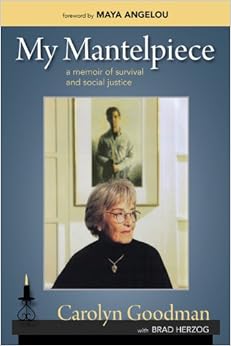
1. My Mantelpiece (Carolyn Goodman, 2014)
With a foreword by Dr. Maya Angelou, My Mantelpiece is the posthumously published story of a woman who was faced with a decision: Do I let my son go to Mississippi? Do I allow him to follow in my footsteps as a social activist, or do I protect him and let someone else do the dangerous work? She realized she had no choice. As she states in the book, “I allowed him to go there, and I was both guilt-ridden and proud, and I devoted the rest of my life to making sure he did not die in vain. I permitted him to go to Mississippi because that is who he was. And it is who I was, too.” As part of the charity partnership mission of Why Not Books, half of all proceeds go directly to The Andrew Goodman Foundation.
THREE MORE BOOKS PUBLISHED AMID FREEDOM SUMMER’S 50th ANNIVERSARY:
2. The Freedom Summer Murders (Don Mitchell, 2014)
Mitchell, who has previously authored books about Henry Ford and John Glenn, focuses his attention on the three civil rights volunteers slain by the Ku Klux Klan. This 256-page book is published by Scholastic Press, which describes it as “the first book for young people to take a comprehensive look at the brutal murders of James Chaney, Andrew Goodman, and Michael Schwerner, through to the conviction in 2005 of mastermind Edgar Ray Killen.”
3. Freedom Summer: The 1964 Struggle for Civil Rights in Mississippi (Susan Goldman Rubin, 2014)
Published in March 2014 by Holiday House, this 144-page juvenile nonfiction account of that fateful summer includes new interviews with Freedom Summer volunteers and many never-before-seen photographs. Among Susan Goldman Rubin’s nonfiction titles are Diego Rivera: An Artist for the People, The Anne Frank Case: Simon Weisenthal’s Search for the Truth, and Music Was It: Young Leonard Bernstein.
4. The 1964 Freedom Summer (Rebecca Felix, 2014)
Educational publisher ABDO has produced an Essential Events Series for adolescents—dozens of books about historical touchstones, from the Salem Witch Trials and the Boston Tea Party to the Trail of Tears and the Transcontinental Railroad to the fall of the Berlin Wall and Hurricane Katrina. In 2014, the story of Freedom Summer took its place in the series about some of the nation’s most seminal events.
TWO BOOKS ABOUT THE MISSISSIPPI MURDERS:

5. Three Lives for Mississippi (William Bradford Huie, 1965)
Because the author was sent by the New York Herald Tribune to cover the breaking story of the missing civil rights workers Mississippi, this book is billed as “the only complete on-the-scene account of the heinous Freedom Summer murders.” And it includes a foreword by Martin Luther King, Jr., who described Huie’s reporting as “part of the arsenal decent Americans can employ to make democracy for all truly a birthright and not a distant dream.”
6. We Are Not Afraid (Seth Cagin and Philip Dray, 1988)
The definitive account of Andrew Goodman, James Chaney, Mickey Schwerner and the civil rights campaign for Mississippi. Publisher’s Weekly gushed that “the infamous murder of three civil rights workers by a Ku Klux Klan mob and Mississippi law-enforcement officers in 1964 takes on the dimensions of a personal, political, and national tragedy in this riveting account” that includes a “brilliant re-creation of the incident, interwoven with a full-scale history of the civil rights movement.”
TWO BOOKS ABOUT THE MURDER TRIALS:
7. Murder in Mississippi (Howard Ball, 2004)
Ball’s book focuses primarily on the murder trial. From Booklist: “Eighteen Klansmen were tried, seven convicted of lesser civil rights violations, and the main conspirator let go under United States v. Price… Ball recounts the legal obstacles that led to the unprecedented conviction of whites for violating the rights of blacks. He focuses on the summer of 1964, when civil rights organizations such as CORE, SNCC, and SCLC brought to Mississippi huge numbers of white college students to work with black college students and local activists on a voter registration drive. Although the legal landmark decision remains important, the murderous resistance by the Klan was a situation the nation could no longer ignore.”
8. Justice in Mississippi (Howard Ball, 2006)
Soon after Ball’s original book was published, 80-year-old Edgar Ray Killen, the alleged mastermind of the murders, was finally put on trial. Ball revisits the crime, the series of events that led to the resurrection of the “cold case,” the strategies of the prosecution and defense, and the unanimous guilty verdict delivered on the 41st anniversary of the murders.
TWO PICTURE BOOKS ABOUT FREEDOM SUMMER:
9. Freedom Summer (Deborah Wiles, 2009)
The story of integration—and the opportunities and challenges of the 1964 Civil Rights Act—is most profoundly told on a very personal level. In this children’s picture book (illustrated with impressionist paintings by Jerome Lagarrigue), Joe and John Henry are best pals. John Henry’s mother works as a housekeeper for Joe’s family. Both boys like to shoot marbles. Both dream of being firemen. Both love to swim. But Joe is white, and John Henry is black, and this is the South in 1964. They can’t swim together. When a law is passed forbidding segregation, the two friends excitedly race to the newly integrated pool… only to find a work crew filling it in with asphalt. They discover that changing a law doesn’t necessarily change hearts and minds.
10. Freedom School, Yes! (Amy Littlesugar, 2001)
Another powerful picture book about Freedom Summer, this one illustrated by Floyd Cooper. The review from Publishers Weekly: “In the summer of 1964, Jolie's family plays host to Annie, a 19-year-old white woman who has volunteered to teach Freedom School. The segregated community of Chicken Creek is rattled by this arrangement--blacks are skeptical of learning about their history and their heroes from a white stranger; whites are suspected of violent efforts (burning down the church, throwing bricks through windows) to drive Annie away. Despite the unrest and tension in the air, Annie helps open Jolie's eyes to her heritage and to the great test of courage that the Freedom School poses to all involved.”
FOUR PERSONAL ACCOUNTS OF FREEDOM SUMMER:
11. Letters from Mississippi (edited by Elizabeth Martinez, 2007)
An intimate account of Freedom Summer through collected letters from Mississippi Summer Project volunteers and more than 40 pages of poetry written by students in the Freedom Schools of 1964. Bruce Watson (see above) wrote this review: “In addition to being of enormous help to me as I wrote ‘Freedom Summer,’ this book is simply the best collection of letters I have ever read on any topic. The volunteers of Freedom Summer were more than courageous and idealistic. They were great writers, and this very well-arranged collection follows them from training in Ohio through to the shock of arrival in Mississippi and on through that turning point summer. Stirring images, vivid conversations, startling violence, amazing courage.”
12. Freedom Summer (Sally Belfrage, 1965)
Here is the story of Freedom Summer told in the immediate aftermath by a participating volunteer. Sally Belfrage was assigned to Greenwood, a Mississippi Delta town that still relied on racial exploitation amid an old-time cotton economy. It also happened to be the headquarters of the Student Nonviolent Coordinator Committee—with Stokely Carmichael as its local project director. Belfrage (who passed away in 1994) was herself a remarkable story. In the 1950s, her parents were deported from the U.S. as alleged Communists (Belfrage wrote Un-American Activities, a memoir of that experience). In 1965, she married Bernard Pomerance, author of the Tony Award-winning play “The Elephant Man.”
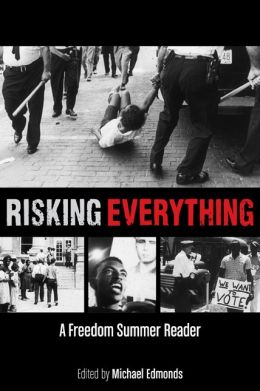 13. Risking Everything: A Freedom Summer Reader (edited by Michael Edmonds)
13. Risking Everything: A Freedom Summer Reader (edited by Michael Edmonds)A collection of 44 documents selected from among the 25,000 pages about the Mississippi Summer Project in the archives of the Wisconsin Historical Society. When the manuscripts were collected, in the mid-1960s, few other institutions were interested in, as the book states, “saving the stories of common people in McComb or Ruleville, Mississippi.”
14. Finding Freedom: Memorializing the Voices of Freedom Summer (Jacqueline Johnson, 2013)
On the campus of Western College at Miami University in Oxford, Ohio, is a monument commemorating Western’s role in Freedom Summer and memorializing Andrew Goodman, James Chaney and Mickey Schwerner. Johnson’s 136-page account contains essays from participants in the 1964 training sessions at Western, Oxford residents who supported the cause, and monument architect Robert Keller.
FIVE GENERAL STUDIES OF FREEDOM SUMMER:
15. Freedom Summer (Doug McAdam, 1988)
A comprehensive (including several appendices) chronicle of the 1964 Mississippi Summer Project. The summary on the cover well describes it: “June, 1964. Over 1,000 volunteers head to Mississippi to register black voters. By August, 4 people are dead, 80 beaten, 1,000 arrested, 67 churches, homes and businesses burned or bombed. This is the story of that summer and its impact on a generation.”
16. Freedom Summer (Bruce Watson, 2010)
The subtitle: The Savage Season of 1964 That Made Mississippi Burn and Made America a Democracy. The opening quotation, a passage from “An Odor of Verbena” by William Faulkner: “A dream is not a very safe thing to be near, Bayard. I know; I had one once. It’s like a loaded pistol with a hair trigger: if it stays alive long enough, somebody is going to be hurt. But if it’s a good dream, it’s worth it.” The first line of Watson’s prologue: “In the fall of 1963, America was suffused with an unbearable whiteness of being.”
17. Faces of Freedom Summer (Herbert Randall, 2001)
 Sometimes black-and-white pictures best tell the story. Published by the University of Alabama Press, this 160-page book includes more than 100 photographs by Randall, who was a young black man from New York in 1964, assigned to photograph Freedom Summer in Hattiesburg, Mississippi. The photographs, now part of a collection at the University of Southern Mississippi, show volunteers, visiting activists like Pete Seeger, freedom schools, community centers, voter registration efforts—they represent the record of a single town during the upheaval of that summer.
Sometimes black-and-white pictures best tell the story. Published by the University of Alabama Press, this 160-page book includes more than 100 photographs by Randall, who was a young black man from New York in 1964, assigned to photograph Freedom Summer in Hattiesburg, Mississippi. The photographs, now part of a collection at the University of Southern Mississippi, show volunteers, visiting activists like Pete Seeger, freedom schools, community centers, voter registration efforts—they represent the record of a single town during the upheaval of that summer.18. Stranger at the Gates: A Summer in Mississippi (Tracy Sugarman, 1965)
Published only one year after Freedom Summer, this book examines the human experiences amid the movement, focusing less on the historic events and important figures and more on the ordinary citizens and volunteers and hosts, their interpersonal relationships, the training, the travel to Mississippi, the living conditions, and the day-to-day activities.
19. Freedom Summer (David Aretha, 2007)
Part of The Civil Rights Movement juvenile nonfiction series from Morgan Reynolds Publishing (which offers titles like Plessy v. Ferguson, Montgomery Bus Boycott, Black Power, and The Murder of Emmett Till), this 128-page account covers everything from volunteer experiences to the murder of Goodman, Chaney and Schwerner to the formation of the Mississippi Freedom Democratic Party.
SIX EXAMINATIONS OF FREEDOM SUMMER’S LEGACY:
20. God’s Long Summer (Charles Marsh, 1997)
A unique take on the civil rights turmoil in the summer of 1964. In the struggle over racial justice, activists across the political spectrum claimed that God was on their side. Focusing on central figures ranging from Fannie Lou Hamer (who “worked for Jesus” in civil rights activism) to Sam Bowers (Imperial Wizard of the White Knights of the Ku Klux Klan in Mississippi), the book examines how their religious convictions led them to the fight and how their images of God clashed.
21. Mississippi Freedom Summer (John F. McClymer, 2004)
Part of the American History series, the book examines the summer of 1964 as part of the larger context of national politics and race relations. History professor McClymer touches on everything from the Kennedy Administration’s response to the attempt to integrate the University of Mississippi to LBJ’s response to the attempt by the Mississippi Freedom Democratic Party to unseat the “regular” delegates at the national convention to the strains within the multiracial coalition working in Mississippi during Freedom Summer.
22. Lessons from Freedom Summer (Kathy Emery, Linda Reid Gold, and Sylvia Braselman, 2008)
Subtitled Ordinary People Building Extraordinary Movements, this 250-page book from Common Courage Press provides context. Not only historical context (how four major civil rights organizations joined together in Mississippi to battle southern segregation), but also a case study of the elements that are crucial to the success of social activism.
23. I’ve Got the Light of Freedom (Charles M. Payne, 2007)
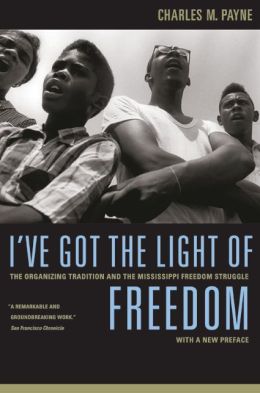
As the subtitle (The Organizing Tradition and the Mississippi Freedom Struggle) suggests, this book is about the Mississippi Project from an organizational and general community activism perspective. From Library Journal: “Payne… presents an illuminating examination of the Civil Rights movement at the local level, in this case Greenwood, Mississippi, in the 1960s. As Payne deftly grafts Greenwood's struggle onto the larger movement, he challenges several widely accepted conclusions, such as overemphasizing a core cadre of male leaders while overlooking the important contributions of women and youth and the belief that the black church was an early leader in the movement.”
24. Like A Holy Crusade (Nicolaus Mills, 1993)
Mills’s book (subtitled Mississippi 1964—The Turning of the Civil Rights Movement in America) recalls the racial coalition that led to successes of the movement. But Mills also examines the divisiveness amid the quest, which marked the beginning of a split between white liberals and black activists and laid the foundations for the Black Power movement.
25. After Freedom Summer (Chris Danielson, 2011)
No study of the Mississippi Summer Project would be complete without an examination of the aftermath. Danielson looks at the history of black politics and white resistance in Mississippi from 1965 through 1986. Freedom Summer changed the state forever. Using newspaper articles, legal cases, and interviews, Danielson examines how those changes played out. One testimonial describes it as “a sobering account of what happened after the singing and marching stopped.”

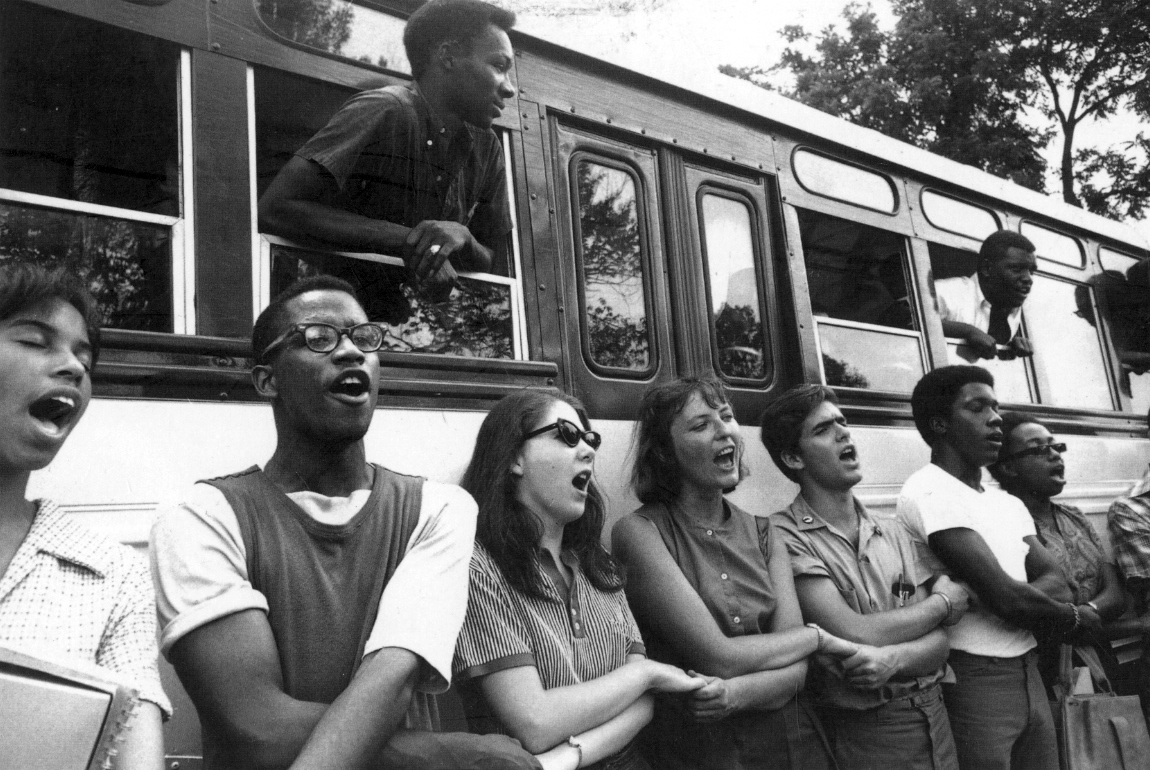
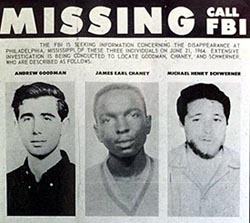
No comments:
Post a Comment